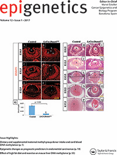
Non-Coding RNA
metrics 2024
Pioneering Discoveries in Non-Coding RNA Biology
Introduction
Non-Coding RNA is a prestigious open-access journal published by MDPI, based in Switzerland, dedicated to the significant and rapidly evolving field of non-coding RNA research. Established in 2015, this journal has quickly become an essential resource for researchers and professionals, showcasing innovative studies and breakthroughs related to the functions and mechanisms of non-coding RNAs in various biological processes. With an impressive Q1 ranking in Biochemistry and strong rankings in Genetics and Molecular Biology, Non-Coding RNA consistently reflects the highest standards of academic publishing. The journal provides comprehensive access options, granting researchers worldwide the ability to disseminate and access high-quality research without subscription barriers. As the landscape of genomics and molecular discoveries continues to expand, the journal aims to foster interdisciplinary exchanges and collaborations, making it a vital platform for advancing knowledge and innovation in this critical area of biological science.
Metrics 2024
 -
- 3.60
3.60 -
- -
-Metrics History
Rank 2024
IF (Web Of Science)
JCI (Web Of Science)
Quartile History
Similar Journals

Nucleus
Fostering collaboration in the quest for biological knowledge.Nucleus is a distinguished academic journal published by Taylor & Francis Inc, dedicated to advancing the fields of Cell Biology and Medicine. Since its inception, the journal has gained significant recognition, achieving a Q1 ranking in both Cell Biology and Medicine (miscellaneous) categories in 2023. With a focus on innovative research that intersects molecular biology and genetics, Nucleus serves as a vital platform for researchers and professionals aiming to disseminate findings that contribute to our understanding of cellular mechanisms and their implications in health and disease. The journal's commitment to Open Access since 2018 ensures that cutting-edge research is readily available to the global community, fostering collaboration and engagement across disciplines. Located in Philadelphia, PA, Nucleus not only aims to publish high-quality articles but also aspires to influence future research directions in the biological sciences, making it an essential resource for anyone involved in the life sciences.

MOLECULAR AND CELLULAR BIOLOGY
Advancing the Frontiers of Molecular DiscoveryMOLECULAR AND CELLULAR BIOLOGY, published by TAYLOR & FRANCIS INC, stands as a preeminent platform for researchers, professionals, and students engaged in the dynamic field of molecular and cellular biology. Established in 1981 and ongoing into 2024, the journal features cutting-edge research that spans across vital sub-disciplines, garnering a strong impact in its contributions to the scientific community. With an impressive Q2 ranking in Cell Biology and Q1 ranking in Molecular Biology for 2023, it consistently publishes high-quality articles that reflect the latest advancements and discoveries within the field. The journal is particularly well-regarded for its rigorous peer-review process and commitment to scientific excellence, making it an invaluable resource for those seeking to deepen their understanding of molecular mechanisms and cellular processes. Although not open access, the journal offers diverse access options for researchers to reach the latest findings. By maintaining a strong focus on biochemistry, genetics, and molecular biology, MOLECULAR AND CELLULAR BIOLOGY remains essential reading for anyone looking to contribute to or stay informed about significant developments within this pivotal area of study.

Reports of Biochemistry and Molecular Biology
Exploring the molecular intricacies of life.Reports of Biochemistry and Molecular Biology, published by VARASTEGAN INST MEDICAL SCIENCES, is a distinguished open access journal dedicated to advancing the fields of biochemistry and molecular biology. Since its inception in 2012, the journal has fostered a platform for researchers and professionals to disseminate their findings, contributing to a richer understanding of biochemical processes and molecular mechanisms. With a focus on innovative research and technology, the journal has established itself as a significant resource within its field, being classified in the Q3 category for Biochemistry and Molecular Biology by 2023. Notably, it has achieved respectable Scopus rankings, including a rank of #40/72 in Biochemistry (medical) as well as a common ground across multiple related categories. The journal’s commitment to open access ensures that its valuable content is freely available to the global scientific community, facilitating knowledge sharing among students, researchers, and professionals alike. Located in Mashhad, Iran, Reports of Biochemistry and Molecular Biology serves as a bridge between cutting-edge research and practical applications in the biochemistry and molecular biology domains.

NUCLEOSIDES NUCLEOTIDES & NUCLEIC ACIDS
Connecting Research and Discovery in BiochemistryNUCLEOSIDES NUCLEOTIDES & NUCLEIC ACIDS is a vital academic journal published by Taylor & Francis Inc, dedicated to the intricate and evolving domains of biochemistry, genetics, and molecular medicine. With an ISSN of 1525-7770 and E-ISSN of 1532-2335, this journal aims to provide a comprehensive platform for the dissemination of research findings, reviews, and methodologies related to nucleosides, nucleotides, and nucleic acids. As a research journal thriving since its inception in 2000, it reflects a diverse spectrum of studies crucial for advancing knowledge in biochemistry (ranked Q4) and genetics (Q4), while also achieving Q3 status in medicine (miscellaneous). Despite its current standing in the quartiles and Scopus rankings indicative of an emergent trajectory, the journal retains significant relevance for those delving into interdisciplinary research that intersects these fields. Researchers, professionals, and students alike can explore a plethora of original research articles, thought-provoking reviews, and updates on pioneering advances that shape our understanding of molecular biology. With its unwavering commitment to scholarly excellence, NUCLEOSIDES NUCLEOTIDES & NUCLEIC ACIDS continues to be an essential resource for those aiming to contribute to and stay informed about this pivotal area of scientific inquiry.

Journal of Cell Communication and Signaling
Transforming Understanding of Cellular CommunicationThe Journal of Cell Communication and Signaling is a prestigious academic journal published by Springer, focused on advancing the understanding of cellular communication mechanisms and signaling pathways. Since its inception in 2007, this journal has established itself as a leading platform in the field, with a strong impact reflected in its 2023 categorizations: Q1 in Biochemistry, Q2 in Cell Biology, and Q2 in Molecular Biology. Researchers from around the globe rely on its rigorous peer-reviewed articles to gain insights into the complex molecular dialogue that underpins various biological processes. With an ISSN of 1873-9601 and E-ISSN of 1873-961X, the journal is committed to disseminating high-quality research that informs both academic studies and practical applications in biotechnology and medicine. Although not an open access publication, it provides essential resources tailored for professionals, students, and researchers, enhancing their knowledge of critical signaling pathways that drive health and disease. The journal is located in the Netherlands, at VAN GODEWIJCKSTRAAT 30, DORDRECHT, and stands out in the field, boasting impressive ranks among its peers in the Scopus database.

JOURNAL OF MOLECULAR MEDICINE-JMM
Pioneering Insights in Drug Discovery and Genetics.JOURNAL OF MOLECULAR MEDICINE (JMM) is a premier publication dedicated to advancing the field of molecular medicine, encompassing critical areas such as drug discovery, genetics, and biochemistry. Published by Springer Heidelberg in Germany, this influential journal has established its significance within the academic community, achieving an impressive Q1 ranking across multiple categories as of 2023, including Drug Discovery, Clinical Genetics, and Molecular Medicine. With a focus on publishing high-quality research and novel insights, JMM appeals to a diverse audience of researchers, professionals, and students passionate about the molecular underpinnings of health and disease. The journal, which has seen a convergence of relevant research spanning from 1976 to 2024, is instrumental in showcasing groundbreaking studies that push the boundaries of knowledge in molecular therapeutics and biomedical science. While it does not offer open access, the rigor of its peer-reviewed content ensures that each publication is a valuable addition to the scientific discourse surrounding molecular medicine. For comprehensive studies and reviews that highlight the intersection of molecular biology and clinical application, look no further than JOURNAL OF MOLECULAR MEDICINE.

Epigenetics
Pioneering Research for a Healthier TomorrowEpigenetics, published by Taylor & Francis Inc, is a leading journal in the fields of Cancer Research, Medicine (miscellaneous), and Molecular Biology. With an ISSN of 1559-2294 and an E-ISSN of 1559-2308, this journal has been paving the way for groundbreaking research since its inception in 2006, and it continues to play a crucial role in advancing our understanding of epigenetic mechanisms and their implications in health and disease. The journal is highly regarded, ranking in the Q1 category for Medicine and Q2 for both Cancer Research and Molecular Biology according to the 2023 category quartiles. Researchers and professionals in the field will find invaluable insights and innovative studies within its pages, making it an essential resource for those engaged in cutting-edge research. Although the journal is not open access, it encourages a comprehensive understanding through high-quality peer-reviewed content. With its creative exploration of the epigenetic landscape, Epigenetics serves as a vital platform for the sharing of knowledge that could lead to breakthroughs in treatments and therapies.

SEMINARS IN CELL & DEVELOPMENTAL BIOLOGY
Pioneering Research for a Deeper Biological InsightSEMINARS IN CELL & DEVELOPMENTAL BIOLOGY is a premier journal published by Academic Press Ltd - Elsevier Science Ltd, focusing on the vital domains of cell and developmental biology. With an impact factor that reflects its rigorous contributions to the field, this journal embodies the highest standards of academic excellence, currently ranking in the Q1 quartile for both Cell Biology and Developmental Biology categories as of 2023. Researchers and practitioners will appreciate its robust Scopus ranking, placing it within the top tiers of developmental biology and cell biology, with percentile ranks of 94th and 90th respectively, showcasing the journal's influential presence in the scientific community. The journal aims to disseminate comprehensive reviews, cutting-edge research articles, and significant advances in the understanding of cellular mechanisms and developmental processes, thereby catering to a diverse audience that includes researchers, scholars, and students dedicated to the life sciences. Given its commitment to open access, SEMINARS IN CELL & DEVELOPMENTAL BIOLOGY promotes widespread dissemination of knowledge, enhancing collaborative research efforts and driving innovation across biological disciplines.

CELL BIOLOGY AND TOXICOLOGY
Pioneering Insights in Cellular ToxicityCELL BIOLOGY AND TOXICOLOGY, published by SPRINGER, stands as a vital journal within the realms of cell biology and toxicology, boasting an impressive 2023 Q1 ranking in its fields, alongside robust Scopus rankings placing it in the top 11th percentile for Toxicology and the 22nd for Health, Toxicology and Mutagenesis. With an ISSN of 0742-2091 and an E-ISSN of 1573-6822, the journal has been a cornerstone of scientific discourse since its inception in 1984, and will continue to converge innovative research until 2024. The journal focuses on the interplay between cellular mechanisms and toxicological implications, making it an essential resource for researchers, healthcare professionals, and students keen on advancing their understanding of these critical areas. Although it does not offer open access, its high impact and prestigious standing ensure that its publications reach a wide audience dedicated to significant advancements in the life sciences.

BIOCHEMICAL GENETICS
Driving Impactful Research in Biochemical GeneticsBIOCHEMICAL GENETICS, published by Springer/Plenum Publishers, is a prominent journal in the fields of biochemistry, genetics, and molecular biology, with a substantial impact on the scientific community since its inception in 1967. The journal holds a significant position within various academic quartiles, ranking Q2 in Ecology, Evolution, Behavior and Systematics, and Q3 in Biochemistry, Genetics, and Medicine (miscellaneous), among others, demonstrating its diverse and interdisciplinary reach. With an ISSN of 0006-2928 and an E-ISSN of 1573-4927, it is recognized for contributing critical research insights and methodologies that drive the fields of biochemical genetics forward. Although it is not an Open Access journal, it provides vital access options and resources for researchers globally, facilitating the dissemination of knowledge across institutions. Positioned within the competitive landscape of Scopus rankings, it maintains respectable standings across its focused areas, making it an invaluable resource for researchers, professionals, and students seeking to deepen their understanding of genetic mechanisms and biochemical processes.